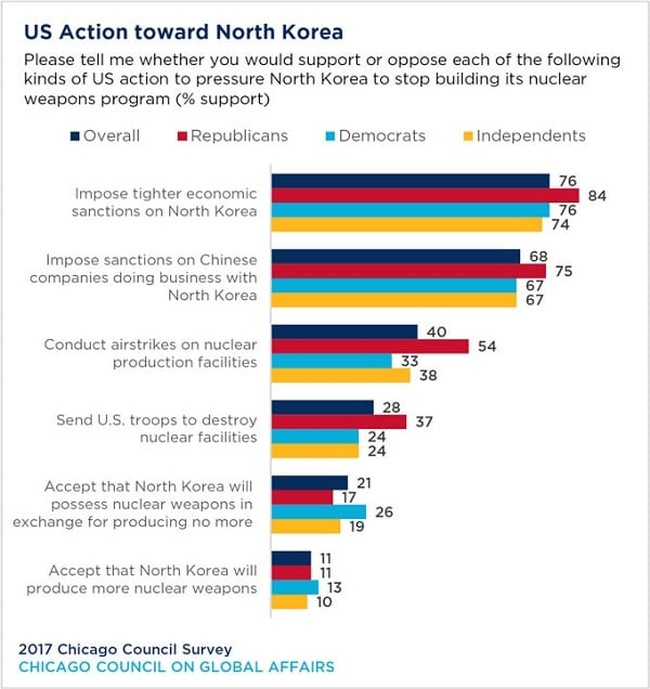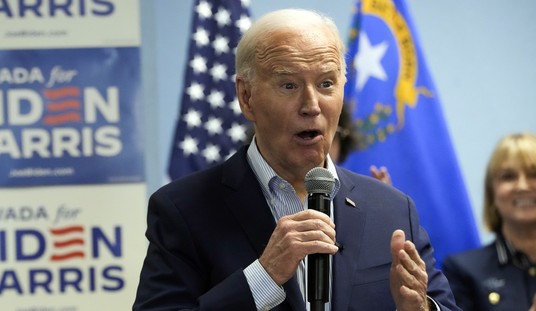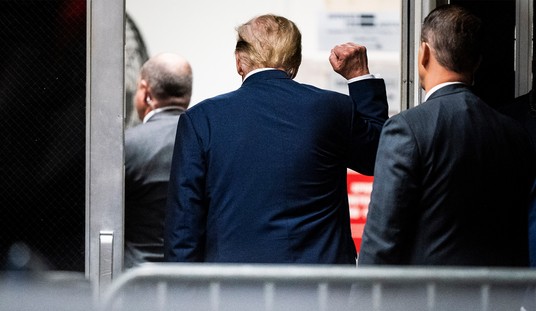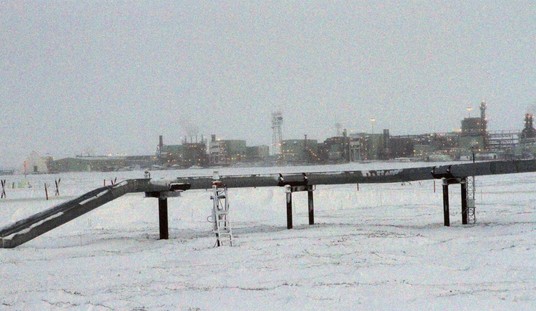My colleague, Joe Cunningham, posted on a report that North Korea has successfully miniaturized a nuclear weapon. This is one of three measurable engineering and manufacturing tasks that North Korea needs to accomplish in order to be able to say it has a nuclear weapon: demonstrate a viable ICBM; demonstrate it can make a nuke small enough to be carried by the ICBM; and demonstrate that the warhead can survive re-entry. Item number one was achieved a couple of weeks ago, while number three failed spectacularly at the same time.
North Korea has successfully produced a miniaturized nuclear warhead that can fit inside its missiles, crossing a key threshold on the path to becoming a full-fledged nuclear power, U.S. intelligence officials have concluded in a confidential assessment.
The new analysis completed last month by the Defense Intelligence Agency comes on the heels of another intelligence assessment that sharply raises the official estimate for the total number of bombs in the communist country’s atomic arsenal. The U.S. calculated last month that up to 60 nuclear weapons are now controlled by North Korean leader Kim Jong Un. Some independent experts believe the number of bombs is much smaller.
…
“The IC [intelligence community] assesses North Korea has produced nuclear weapons for ballistic missile delivery, to include delivery by ICBM-class missiles,” the assessment states, in an excerpt read to The Washington Post. The assessment’s broad conclusions were verified by two U.S. officials familiar with the document. It is not yet known whether the reclusive regime has successfully tested the smaller design, although North Korea officially last year claimed to have done so.
The DIA and the Office of the Director of National Intelligence declined to comment.
An assessment this week by the Japanese Ministry of Defense also concludes there is evidence to suggest that North Korea has achieved miniaturization.
Apparently, the Washington Post is working from a draft memo. The DIA, more likely than not, would not produce an assessment that says “The IC assesses” unless it was circulating it for approval/buy-in because the DIA can’t speak for the IC. I don’t know what the DIA is like these days. When I worked with their product they weren’t terribly reliable. This memo seems to be confirming what the North Koreans declared after their last nuclear test in September 2016. This assessment seems to be stronger than that produced by Japan and pending a general buy-in from allies and the entire IC I’d place the assessment in the “definite maybe” classification.
Regardless of the accuracy of this memo, as I said in the intro, this is an engineering challenge and a manufacturing challenge. Eventually, the North Koreans will achieve this as well as the survivable re-entry vehicle.
Now what?
North Korea cannot be reasonably deterred by our nuclear arsenal. The area of North Korea is so small that any nuclear strike by the United States is going to produce unpleasant side effects–EMP effects and radioactive fallout–in Russia, China, South Korea, and Japan. Our battlefield nuclear weapons were demilitarized after the INF treaty. We are facing a situation where we could be forced to fight a nuclear power with non-nuclear forces.
You always analyze an enemy based on his capabilities, not his intentions. This is particularly true when the enemy is North Korea. After all, it is the North Korean regime that hacked two American officers to death with axes, pirated a US Navy ship, torpedoed a South Korean frigate and blew up the South Korean cabinet in a foreign capital. As Melissa Hanham, an arms control specialist said in an interview, “I do think that there’s a tendency to underestimate North Korea, or to assume they are not technologically advanced enough to be a threat to the U.S., and I think that that is a mistake.”
Kim has said neither missiles nor nukes are on the table for negotiation. He’s probably right. He not only needs nuclear missiles, he needs an enemy to aim them at. We don’t know a lot about how the North Korean regime operates but we can assume that if Kim backs down his life expectancy, and that of his family, could be measured in nanoseconds. Likewise, President Trump has drawn some pretty firm lines.
North Korea just stated that it is in the final stages of developing a nuclear weapon capable of reaching parts of the U.S. It won't happen!
— Donald J. Trump (@realDonaldTrump) January 2, 2017
Back in April, UN Ambassador Nikki Haley hinted that a usable ICBM could be a cause for war.
Two weeks ago at Aspen, Chairman of the Joint Chiefs of Staff General Joseph Dunford had this to say:
“As I’ve told my counterparts, both friend and foe, it is not unimaginable to have military options to respond to North Korean nuclear capability,” he said at the Aspen Security Forum in a conversation with NBC’s Andrea Mitchell. “What’s unimaginable to me is allowing a capability that would allow a nuclear weapon to land in Denver, Colorado. That’s unimaginable to me. And so my job will be to develop military options to make sure that doesn’t happen.”
Last weekend, National Security Adviser H. R. McMaster weighed in on the North Korean threat:
“It’s impossible to overstate the danger associated with a rogue, brutal regime,” McMaster told Hugh Hewitt on the conservative commentator’s MSNBC TV show.
“Are we preparing a plan for a preventive war? … The president has been very clear that he’s not going to tolerate North Korea being able to threaten the U.S. … So of course we have to provide all options to do that, and that includes a military option.”
Still, he said the United States would like to resolve the situation “short of what would be a very costly war.”
The retired Army general said President Trump has been “deeply briefed” on the strategy on North Korea.
Regardless of the confidence the public may or may not have in Trump, we have reached a political point where 62% of the public are in favor of sending troops to South Korea’s defense (up from 47% last year) and where a majority of the nation favors actions that will probably lead to war and a majority of Republicans are in favor of war.

War has its own logic. As events happen they slip beyond the control of men and become forces unto themselves. One of my favorite books it Barbara Tuchman’s The Guns of August. In it we see what happens when processes gain control. The Schlieffen Plan called for Germany to mobilize before France, swing through Belgium, knock France out of the war, turn east and settle the Tsar’s hash. To do this every railroad and piece of rolling stock in Germany had to be micromanged. Shortly before giving the mobilization order, which would set off mobilization in France and Britain, Germany received an offer from Britain that France’s neutrality could be guaranteed in the war between Germany and Russia. The Kaiser wanted to change plans. Moltke, the chief of the German General Staff, said it couldn’t be done, that all the time tables that had been carefully wargamed over a couple of decades would fall apart. There would be chaos. The Kaiser relented, saying “Your uncle would have given me a different answer!” Germany invaded Belgium and France, Britain entered the war and four years of carnage ensued.
A logical next step for the United States is to order a NEO, a Non-Combatant Evacuation Operation, to remove US citizens and military dependents from South Korea and perhaps from Japan. I’ve participated in two of these–Liberia and Romania, both in late December 1989–at the Army Staff level (Army, by the way, is the executive agent for all NEOs). They are intense. We would do it if we detected signs of North Korea mobilizing–to the extent that we have that capability–or if hostilities seemed imminent of a horizon of a few weeks. The North Koreans could interpret it as a sign of an impending attack and try to be first out of the blocks. A little bit of craziness by a North Korean patrol boat skipper with a brand new cruise missile could set off a retaliation that could mushroom out of control.
It is becoming difficult to see how either side extracts themselves from this, or that they even want to. We are at the point where war is apparently considered winnable and thinkable by both the US and the DPRK. At some point someone is going to decide it is time to get on with it.














Join the conversation as a VIP Member